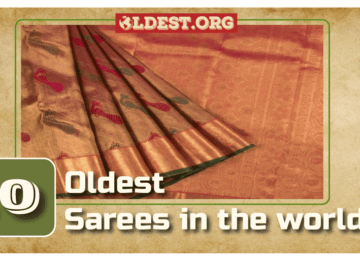Japanese anime traces its roots back to the start of the 20th century as the Japanese attempted to modernize the entire country. Although historians can’t pinpoint an exact date, 1917 is often cited as a key year in the development of Japanese animation. In fact, the oldest existing anime film was proved to have been produced in 1917.
Unfortunately, due to the Great Kantō earthquake of 1923, most of the first anime was destroyed or lost. However, a few old films have turned up in recent years and were digitally restored.
All of the anime on this list date back to the early 20th century and can be viewed (along with several other old anime) on this website celebrating the 100th anniversary of Japanese animated film. These anime are some of the oldest cartoons around.
7. Sarukanigassen
English Title: Yasuji Murata’s Monkey and the Crabs
Year founded: 1927
Director: Yasuji Murata
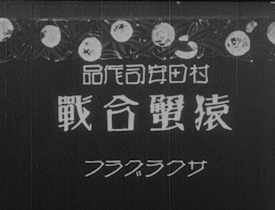
Sarukanigassen was Yasuji Murata’s first animated film. The forms Murata used for the characters may have influenced the images used in Dainippon Yubenkai Kodansha’s Monkey and the Crabs (1937), a picture book by Sengai Igawa.
Murata’s anime depicts the Japanese folktale known as The Quarrel of the Monkey and the Crab. In the story, a sneaky monkey kills a crab and is later killed in revenge by the crab’s children.
The existing film is five minutes long and is a shortened version of the original film that cut out the scene where the monkey tricks the crab into exchanging its rice ball for the monkey’s persimmon seeds.
6. Kemurigusa Monogatari
English Title: A Story of Tobacco
Year founded: 1926 (possibly 1924)
Director: Noburo Ofuji
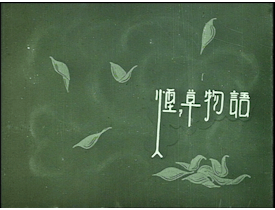
The surviving version of Kemurigusa Monogatari is only three minutes in length as opposed to the six minutes of the original — only the first have of the film remains.
The film shows a small man telling the story of tobacco to a young girl wearing a traditional Japanese hairstyle. The girl depicted in the anime is supposedly based on director Noburo Ofuji’s younger sister, Ichii. The animated girl and Ofuji’s sister resemble a character in Ofuji’s later film Chiyogami Eiga.
Although the anime’s official production date is listed as 1926, some people believe that the film may have been created earlier in 1924.
5. Senga Tsubo
English Title: The Pot
Year founded: 1925
Director: Sanae Yamamoto
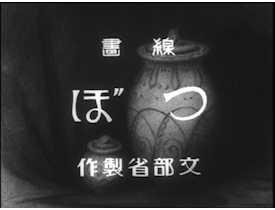
Senga Tsubo was the first film that the Ministry of Education commissioned from Sanae Yamamoto after he began working for them.
The film combines the story of “The Fisherman and the Genie” from The Arabian Nights with the tale about the lion and the fox from Machiavelli’s The Prince.
The Pot is a 17 minute, black and white, silent film. Conservations between the story’s characters are depicted with hand-cut lettering and speech bubbles.
4. Kyoikusenga Ubasuteyama
English Title: Ubasuteyama
Year founded: 1925
Director: Sanae Yamamoto
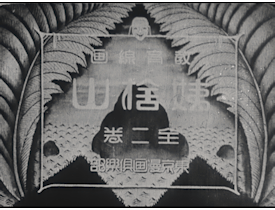
Kyoikusenga Ubasauteyama took over a year and a half to produce and was one of Sanae Yamamoto’s earliest works that was well-received by the Japanese public.
It is an 18 minute long film that tells the story of a lord who lives in Shinano Province. This lord hates old people and banishes them to live on an exiled island when they turned 60 years old. Eventually, a young man convinces the lord to stop exiling old people and to treat them with respect.
At the time of its release, Yamamoto sold nearly 100 prints of the film. It was even purchased by the Social Education Division of Japan’s Ministry of Education. After the Ministry bought the film, Yamamoto became a temporary employee of the Ministry of Education. While working for the Ministry, he produced several more educational films.
3. Kyoikuotogimanga Usagi to Kame
English Title: The Hare and the Tortoise
Year founded: 1924
Director: Sanae Yamamoto
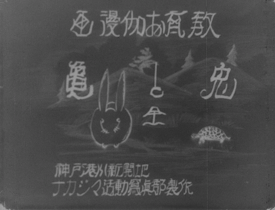
The Hare and the Tortoise is a six minute short animated film based on the classic story that it is named after. The anime dates to 1924 and is one of the first animated depictions of the Hare and Tortoise story that we are all familiar with.
The art of the film features a simple technique using only lines and unique backgrounds that look like they’re from another country rather than the traditional landscapes used in old Japanese folk tales.
The film is one of Sanae Yamamoto’s earliest works and was produced by Seitaro Kitayama, Yamamoto’s teacher who created another early anime, Urashima Tarō.
2. Urashima Tarō
English Title: Urashima Tarō
Year founded: 1918
Director: Seitaro Kitayama
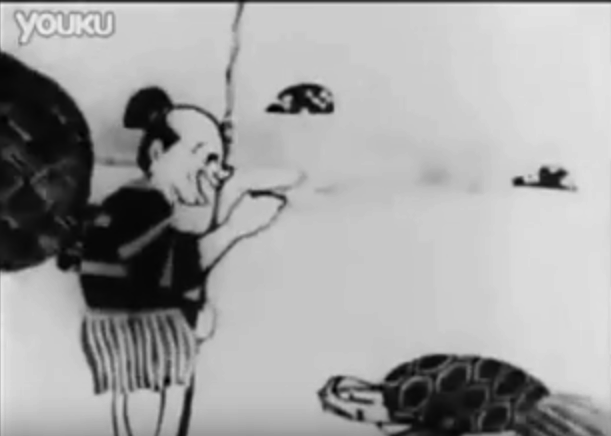
Urashima Tarō is one of two films discovered in an antique shop in Osaka, Japan in 2008; the other film was Nakamura Gatana (listed above).
It is one of the earliest examples of anime in existence and a short silent film. The film is based on the Japanese folktale about a fisherman traveling to an underwater world on the back of a turtle.
1. Namakura Gatana
English Title: The Dull Sword
Year founded: 1917
Director: Junichi Kouchi
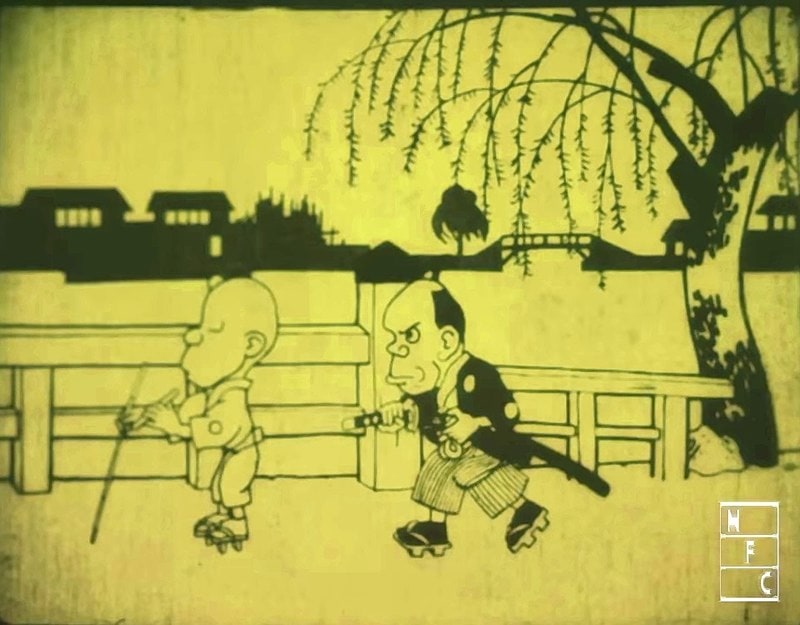
Namakura Gatana is the oldest existing anime short film, dating back to 1917. The film was lost until a copy was discovered in 2008.
The Dull Sword is one of three works credited as a forerunner of Japanese animation films and is the only anime that still exists.
It was digitally restored in 2008 with the help of Natsuki Matsumoto, a visual culture historian, who owns the nitrite positive of the film.
Initially, Matsumoto’s restoration was thought to be the same as the original film. However, a newer nitrate was uncovered in 2014. The nitrate features the first half of the film while Matsumoto’s is the second half.
OTHER POSTS YOU MAY BE INTERESTED IN





